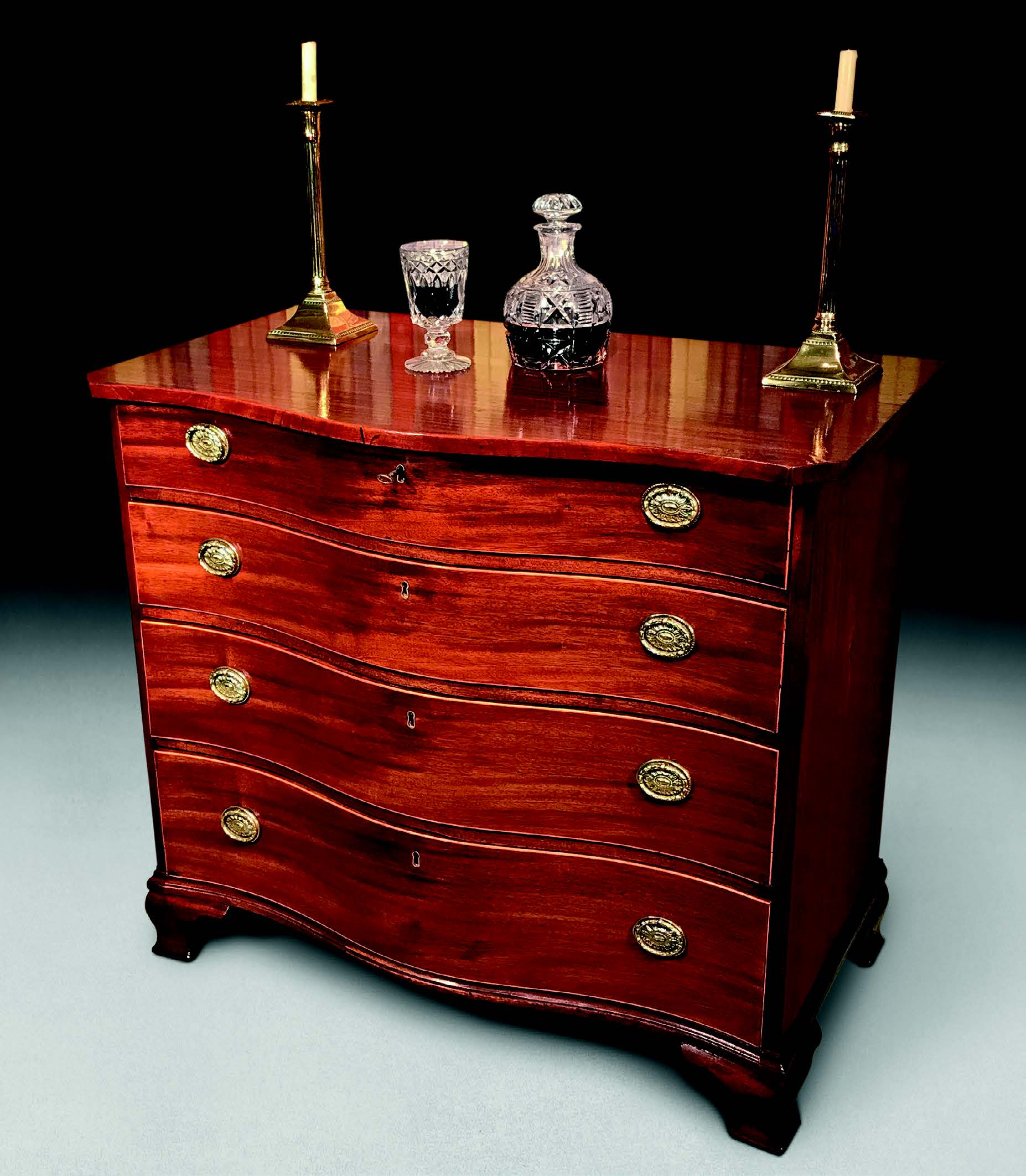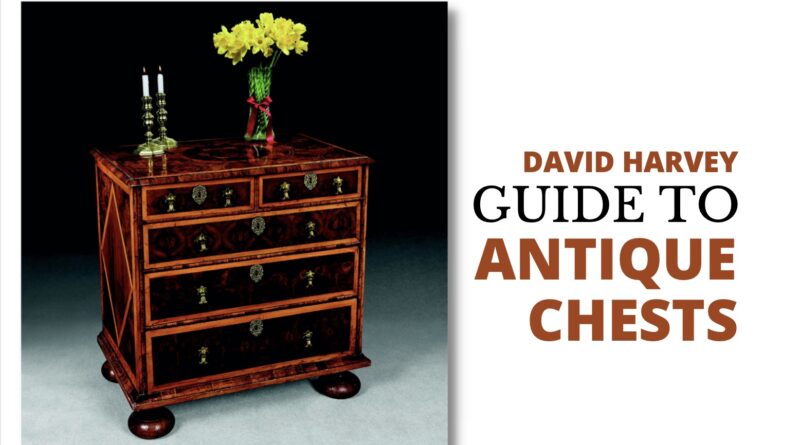The Essential guide to antique chests
 A chest is one of the most stylish pieces of antique furniture you can own. Antiques dealer David Harvey lifts the lid on some of the best and offers a guide to antique chests.
A chest is one of the most stylish pieces of antique furniture you can own. Antiques dealer David Harvey lifts the lid on some of the best and offers a guide to antique chests.
The chest of drawers as an item of furniture has a very special place in most people’s hearts.
Indeed, generations have been raised using the phrase “top drawer” to signify something of the highest quality or provenance, and “bottom drawer” referring to a young lady’s collection of silver, napery or bedclothes to be used after her marriage.
History of Antique Chests
Like all furniture, chests conform to changing styles, tastes and makers’ techniques throughout the periods from the 17th to 19th centuries, spanning a dozen monarchs’ reigns. The earliest examples display the continental influence prevalent during the reign of Charles II (1660-1685) after the restoration of the monarchy, reflecting the final flourishes of the English Baroque. This is the period where we witness the progression from joinery to cabinetmaking.
Charles II brought over craftsmen from Europe who introduced continental techniques using readily available timbers such as oak and pine for the carcass, and then veneered over in fine walnut or similar, sometimes with panels of marquetry.
This two-part oak chest is enriched with yew wood bandings and panels of exotic hardwoods set out in a geometric pattern. It would have been made in two parts for ease of transportation and movement within a home and would probably have been delivered to a manor house or similar.

The drawers have thick sides to accommodate the side runners and large nails used to hold the drawers together with the bottom similarly nailed on.

Queen Anne Chest
Within a quarter of a century the changes in every aspect of furniture were apparent and, as we move through the reign of William and Mary (1689-1702) and into that of Queen Anne (1702-1714), how things change.

Chests on stands fell from favour and were replaced by chests on chests, or tallboys.
They usually had a flat cornice, and a mid moulding covering up the gap between the separate upper and lower sections. The use of veneers had become a standard for cabinet-made fine furniture, and the chunkiness of the chest of drawers had been reduced to a smoother form which was decorated with patterns of veneers, rather than applied mouldings and panels.
Typical of this transition is this Queen Anne period chest with its patterns executed in oyster veneers of laburnum, so called because when pairs of consecutive cuts from the branches were placed opened out book fashion, the design so produced resembles the interior markings of an oyster shell. The straight feet of the extended corner stiles of the earlier chest gave way to turned bun feet, with the formerly nailed drawer sides now held in place with dovetailed joints.

A transformation also took place in the way the drawer bottom was attached. Whereas previously it was held in place with clout nails, now the bottom boards are rebated into the back, sides and front of the drawer, so in effect, the bottom edges are runners.
Serpentine Front Chest

By the mid 18th century, French Rococo pieces, with a bulbous form of wavy sides and fronts, referred to as bombe chests, were fashionable. In England we often see large, heavily decorated and carved serpentine commodes, chests or presses in several design books, including Chippendale’s Director and Ince and Mayhew’s designs, but in this instance we see the lighter feel of George Hepplewhite or Shearer’s designs.
English examples at the time were more restrained, with just a serpentine front.
From the middle of the 18th century, it became more usual for the grain on the drawer bottom to run from side to side, rather than front to back as it formerly had. Cockbeading, a thin lip to the drawer front, was a popular moulding from the 1760s.
The Age of Mahogany
In the 18th century, the next technical development was drawer bottoms which slid into place from the back of the drawer in a groove cut into the sides. The transition from walnut to mahogany gradually took place.
By the 1730s, mahogany was increasingly imported from the Caribbean, along with more varieties of exotic timbers from South America.
Dating from the third quarter of the century, this straight-fronted mahogany chest has the top crossbanded in rosewood, adding to its cache, as does a pull out brushing slide below the top and above the top drawer. Bun feet have now been replaced by bracket feet, with swan neck handles in fashion.

Whether it was intended for a bedroom or a reception room is not known, but the rapidly expanding merchant class’s appetite for good quality, enduring furniture was huge with centres of manufacturing excellence in many large towns.
The Secretaire Chest
As we progress closer into the 19th century, I am amazed by the ingenuity of the craftsmen. Working with only hand tools by daylight or candlelight, they were able to shoehorn any number of different attributes into an item.
It would have been such fun to overhear a conversation between a maker and patron in George III’s reign maybe ordering a chest, but wanting a facility for writing in it as well. Not a bureau, then, but a chest!

And so the secretaire chest of drawers was born. It combined both requirements, with the top drawer having a hinged front opening to reveal a leather-lined writing surface with an arrangement of satinwood veneered drawers and pigeon holes behind. It was raised on more delicate, splayed bracket feet united with a bowed apron. The obround-shaped veneer panels are particularly decorative and help to date this from the last decade of the 18th century.
David Harvey is the owner of W R Harvey & Co. Ltd., located at 86 Corn St, Witney, Oxfordshire. For more details go to www.wrharvey.com


